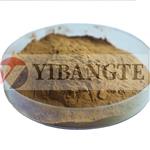Quillaja is a slender, upright evergreen perennial tree growing to 30 to 45 ft tall with pendulous branchlets. The brightgreen, oval leaves have slightly toothed margins. Cream-white, star-shaped flowers appear at the ends of the branchlets during May and June and somewhat into summer. The fruit is a rosette of five leathery lobes that matures in fall. It has white flowers clustered in cymose inflorescences and numerous winged seeds. The generic name is derived from the Chilean word quillean, meaning to wash, from the use made of the bark. The part used is the bark. Quillaja has a bittersweet, aromatic flavor.
Extractives and their physically modified derivatives such as tinctures, concretes, absolutes, essential oils, oleoresins, terpenes, terpene-free fractions, distillates, residues, etc., obtained from Quillaja saponaria, Rosaceae.
The active principles contained in the bark are two saponins—quillaja saponin and quillaic acid, or quillaja sapogenin. Small amounts of saccharose, starches, calcium oxalate, vitamin C and a few other unidentified components are also present (Burdock, 1997). Quillaia contains about 10% saponins, which primarily include glycosids of quillaic acid. A saponin called QS-21 has been used as an adjuvant.* The bark also contains tannin. Eight new triterpenoid saponins were isolated from a bark extract of Q. saponaria Molina. The saponins were characterized as phytolaccagenic acid, 22-β-hydroxy-quillaic acid, and echinocystic acid substituted with different oligosaccharides at C-3 and C-28. The O-4 of the fucosyl residue in the 28-O-oligosaccharide was substituted with either acetyl, (S)-2-methylbutanoyl, or (3S,4S)-3-hydroxy-4-methylhexanoyl groups.
Flammability and Explosibility
Non flammable
